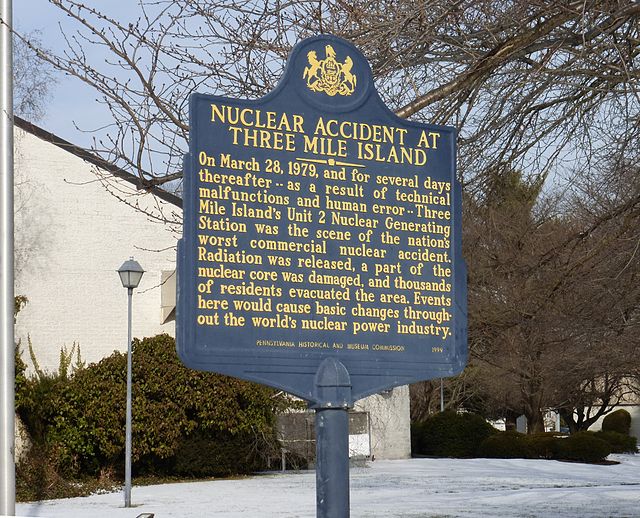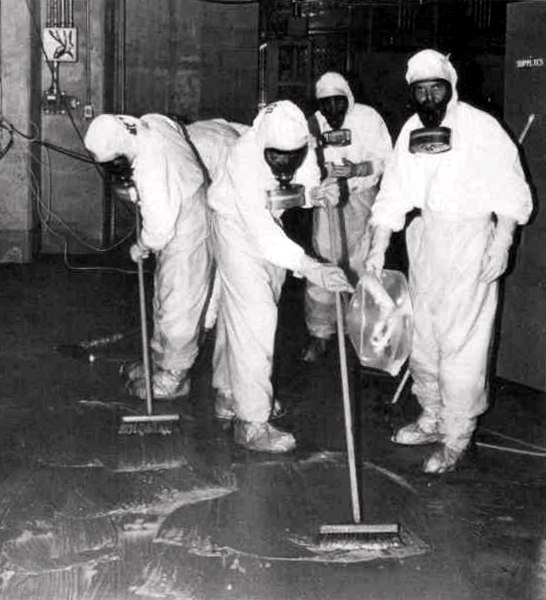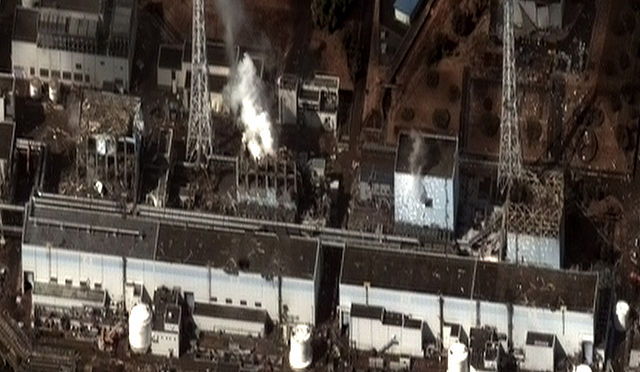Three Mile Island accident
The Three Mile Island accident was a partial nuclear meltdown of the Unit 2 reactor (TMI-2) of the Three Mile Island Nuclear Generating Station on the Susquehanna River in Londonderry Township, near Harrisburg, the capital city of Pennsylvania, United States. The reactor accident began at 4:00 a.m. on March 28, 1979, and released radioactive gases and radioactive iodine into the environment. It is the worst accident in U.S. commercial nuclear power plant history. On the seven-point logarithmic International Nuclear Event Scale, the TMI-2 reactor accident is rated Level 5, an "Accident with Wider Consequences".
Three Mile Island nuclear facility, c. 1979
A sign dedicated in 1999 in Middletown, Pennsylvania, near the plant, describing the accident and the evacuation of the area.
Three Mile Island in background behind Harrisburg International Airport, a few weeks after the accident
A clean-up crew working to remove radioactive contamination at Three Mile Island
A nuclear meltdown is a severe nuclear reactor accident that results in core damage from overheating. The term nuclear meltdown is not officially defined by the International Atomic Energy Agency or by the United States Nuclear Regulatory Commission. It has been defined to mean the accidental melting of the core of a nuclear reactor, however, and is in common usage a reference to the core's either complete or partial collapse.
Three of the reactors at Fukushima I overheated because the cooling systems failed after a tsunami flooded the power station, causing core meltdowns. This was compounded by hydrogen gas explosions and the venting of contaminated steam that released large amounts of radioactive material into the air.
Three Mile Island Nuclear Generating Station consisted of two pressurized water reactors manufactured by Babcock & Wilcox, each inside its own containment building and connected cooling towers. Unit 2, which suffered a partial core melt, is in the background.
SL-1 core damage after a nuclear excursion.







